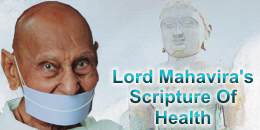
The emotion and the impetus (bhavana and samvega) are the two terms used in Psychology. The emotion and the impetus are synthesised to such an extent that it is not easy to divide them. The bhava is the original source. The bhava does not get expressed. It remains within. When the bhava becomes intense, samvega (impetus) arises. It is only impetus that brings man into the state of happiness or misery. The bhava remains in the background.
In the language of Psychology, the bhava creates the sense of content or discontent. When the feelings of content or discontent become intense, they give rise to the problem of impetus. They become like a forceful current of water which turns into a flood. When the bhava turns into impetus, it creates innumerable problems. Two words are found in the doctrines promulgated by Mahavira: attachment (rag) and malevolence (dvesh). Another group of words consists of lust, anger, conceit, deceit, greed, hatred and physical passion. Attachment and malevolence have their intents: One is ragashdya (Intent relating to attachment)and the other is dveshashaya (Intent relating to malevolence). Both these intents exist in our subtle body. Whenever dveshashaya is excited, the feeling of anger finds expression. Anger is a bhava as well as an impetus. Similarly, egotism, hypocrisy, greed, etc. turn into passions.
It is not necessary to completely dissociate the bhava and the impetus from each other. But when we think about the form of both, it can be said that the world of the bhava is imperceptible and subtle. The world of impetus becomes before us, and is visible. Expression is anger, aim behind it never visible. Anger is not a continuous state; it finds expression from time to time, and visible. The intent behind malevolence gives rise to anger and that intent remains with a living being all the time, whether asleep or awake. When that intent is expressed as anger, it becomes the impetus. The original source of greed is attachment. But greed is not always present. When man thinks and remains in that mental state, greed becomes a passion. Craving is not always present. The original source of craving is attachment, which remains in man all the time.
We are divided into two parts one consists of attachment and malevolence, the second of anger, conceit, deceit and greed. This leads to the third part consisting of the dependent bhava resulting from anger and of the dependent bhava resulting from vanity. Fear is not an original bhava. Fear comes from greed. The more greed one has in him, the more he has the sense of attachment. If one who has no greed, he has no attachment so he would have no fear in him at all. Passion is not born by itself. It is born from sense of attachment or greed. That too is nokashaya. It is a kind of passion. Thus we have three categories the first is the intent of attachment and malevolence. The second category consists of the passion resulting from their intensity. The third is the category consisting of the conduct and behaviour depending on them.
 Acharya Mahaprajna
Acharya Mahaprajna

